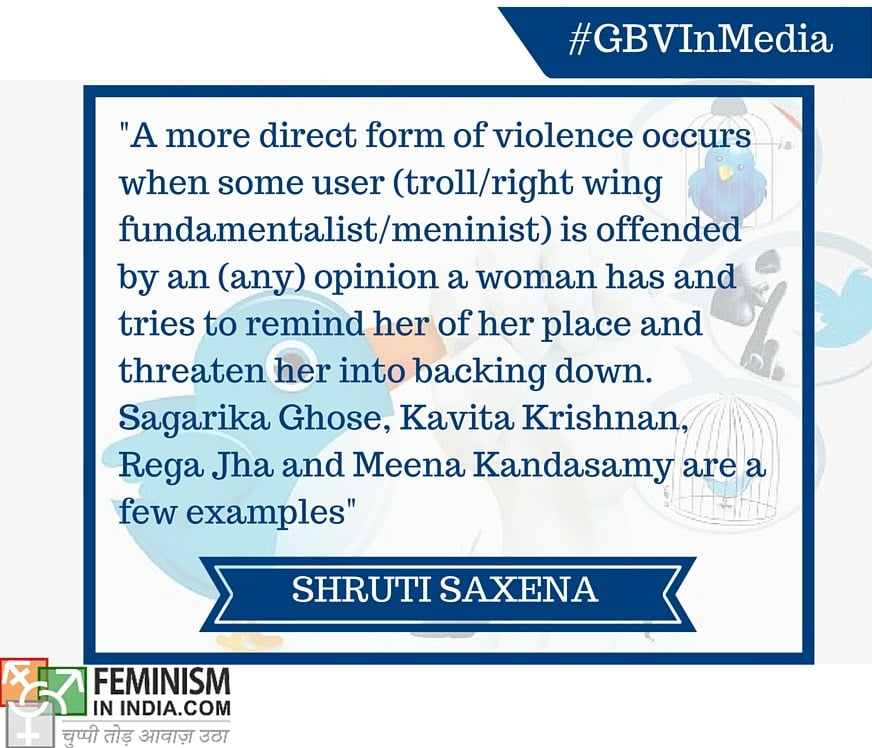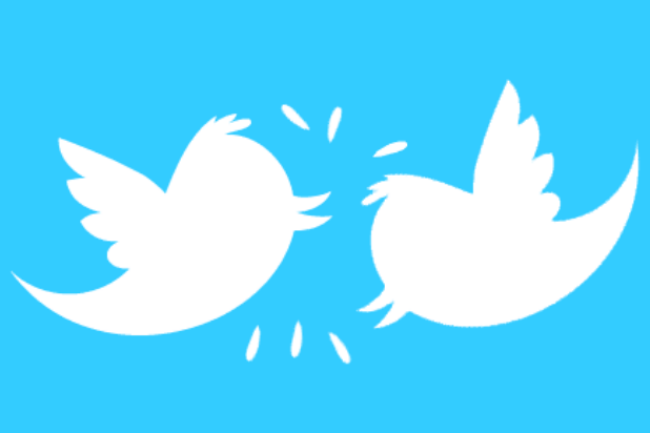This article is part of the #GBVInMedia campaign for the 16 Days Of Activism global campaign to end gender-based violence. #GBVInMedia campaign analysis how different kind of mainstream media (mis)represents/reports gender-based violence and broadens the conversation from violence against women to violence against people from the queer community, caste-based violence and violence against people with disabilities. Join the campaign here.
As our understandings of gender based violence evolve, it is clear that it is no way limited to spaces where physical interaction occurs. It can take other forms including emotional abuse and harassment. Harassment of women and men who don’t confirm to heteronormative norms as well as those who identify elsewhere on the gender spectrum is relentless and incessant online. This is a complete contrast to the early promise of technology and the Internet, which was supposedly built on the principle and promise of neutrality. What we have is a flawed Internet, one in which women are routinely harassed and threatened.
The anonymity of the internet brings out all the haters out of the woodwork. As online tools and platforms evolve and take new forms, so does the harassment online. Within this Internet live a host of equally, if not more, flawed tools. Spaces for discussions about gender-based violence are also spaces where gender-based violence takes place. It is reflective not only of the rot in our societies but also the denial in which we are steeped, that we do not consider online violence as ‘real’ as we consider violence offline. Since its launch in 2006, Twitter, an online social networking site, has grown tremendously. Users across the world are responsible for over 500 million tweets each day. If you are an active user and retweeter, consider checking out Twee-q to find out what proportion of men and women you are retweeting (a lot of users disproportionately retweet men).
I think Twitter and gender-based violence interact in two main ways. First, Twitter is a platform by which individuals or organizations challenge and build how we understand GBV, share information and campaigns, gather support. Twitter allows people to share information that is widely known and perhaps more importantly, events and happenings that don’t make it to mainstream media. Some folks create original content, others retweet, some add their perspective to a tweet by quoting on top of it. Hashtag activity is one of the metrics of success on Twitter and the GBV related hashtags seem to have an organizational impetus.
The second interaction occurs when Twitter becomes a site for GBV. In this context, I see various involved parties: the victims of the GBV, the perpetrators, allies for the victims, supporters of perpetrators and perhaps people who see themselves as ‘neutral’ (if you are interested in a more detailed classification, check out this thought-provoking report by Women Action Media). Violence on Twitter occurs in various ways, can be initiated by one or multiple users, it can snowball as well with other users tacking on. A simple and subtle way is when users undermine credibility of women – this may be by attacking women in their personal spaces and lives or this may be by sharing the work and creative content of women and dissing it.
A more direct form of violence occurs when some user (troll/right-wing fundamentalist/meninist) is offended by an (any) opinion a woman has and tries to remind her of her place and threaten her into backing down. Sagarika Ghose, a leading journalist, has been routinely threatened with sexual and physical violence as well as had personal details of her life revealed. All of this for having an opinion. Kavita Krishnan, a women’s rights activist, is regularly attacked on Twitter. One notable example is when she expressed critical views about the #selfiewithdaughter campaign and people responded with kidnapping and death threats. For each case of harassment that makes it to the news, there are many, many more that go by unnoticed.
 An unhappy, but repeated outcome of such abuse online is to force women (and others experiencing this harassment) offline. As a space, Twitter can be dangerous and humiliating. Meena Kandasamy, a poet, writer and activist was subject to vicious abuse and harassment on Twitter, for sharing details of a festival by a marginalized caste group in Hyderabad, where beef was being served. Rega Jha, Editor, Buzzfeed India, tweeted: “It’s so sad that no matter who wins, Pakistanis will continue to be way hotter than us and we’ll continue to be their ugly neighbours.” As you can imagine, this was followed by an online campaign of hate and abuse.
An unhappy, but repeated outcome of such abuse online is to force women (and others experiencing this harassment) offline. As a space, Twitter can be dangerous and humiliating. Meena Kandasamy, a poet, writer and activist was subject to vicious abuse and harassment on Twitter, for sharing details of a festival by a marginalized caste group in Hyderabad, where beef was being served. Rega Jha, Editor, Buzzfeed India, tweeted: “It’s so sad that no matter who wins, Pakistanis will continue to be way hotter than us and we’ll continue to be their ugly neighbours.” As you can imagine, this was followed by an online campaign of hate and abuse.
The hashtag of the Take Back The Tech! campaign, initiated by the Association for Progressive Communications (APC) Women’s Rights Programme, was attacked online. Abusers and trolls (including people associating with #Gamergate) used the #takebackthetech hashtag, to post threats and violence.
Jac sm Kee, Manager, Women’s Rights Programme at APC, highlights how the online abuse and violence women face stems from gender inequality and discrimination. This includes backlash aimed at women who are occupying spaces that have traditionally been dominated by men. The backlash is often intended to narrow and limit women’s participation online. She sees different ways to counter this:
Don’t be afraid of technology, get to know it; delve into and thoroughly understand the technology you are using, the data you are sharing and privacy settings. Insist on your presence and occupy online spaces. Facing an online attack can be exhausting and sometimes frightening. Reaching out to your allies and friends for support is an important strategy, both for solidarity as well as to strengthen your shared actions.
Finally, she recommends responding with feminist narratives and content as well as not engaging with trolls whose main intentions are to drag you into pointless conversations.
Twitter has not made it easy on those experiencing abuse: mechanisms to report abuse (by the victim or by observers) have been slow and always lagged behind the abuse women are experiencing. Law enforcement still struggles to consider crimes online as ‘real crimes’ and further complicates and invalidates how victims experience online abuse. Men and trolls outnumber women online, furthering the imbalance in participation.
There is a lot of work we need to do to make online spaces safe and accessible. We need to understand and articulate the various forms of abuse online. Platforms such as Twitter need to get serious about tackling online abuse and to do so, they will need some not so subtle nudging from their stakeholders as well as users. People who are responsible for enforcing laws and prosecution need to have more education and understanding about online harassment. This will help ensure consequences for perpetrators, who often get away scot-free. I would argue that none of this is new, but is increasingly urgent as our personal and online lives are increasingly aligned. To learn more, read this report by Women Action Media!, which provides a comprehensive set of recommendations to tackle the ever-growing abuse on Twitter. At the end I would say that this is by no means an exhaustive analysis, but an entry point to make visible the many and often invisible forms of how gender-based violence exists online.
About the author(s)
Feminist and Indian. Interests include gender, education, mental health and wellness. India/US.




